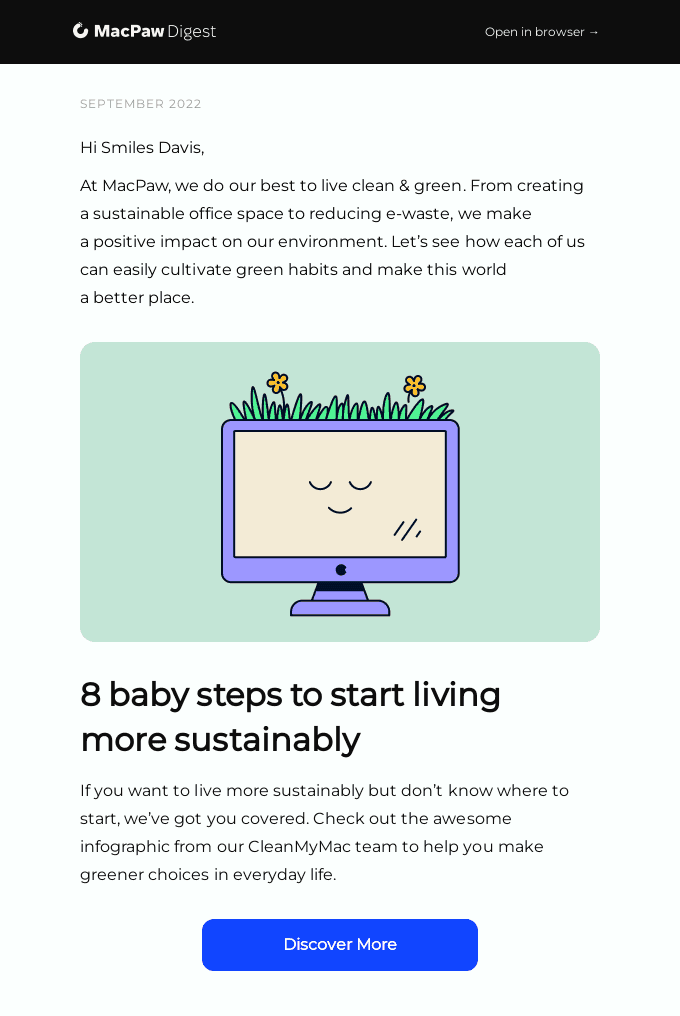7 Email Lead Generation Tactics to Improve the Response Rate
Email marketing is an important part of a company’s marketing strategy and communication with customers. Email marketing is projected to generate $17.9 million in revenue by 2027.
However, some companies have achieved good results in this by building email lists, while others do not. So it is worth getting acquainted with what distinguishes successful companies from unsuccessful ones in their approach to this matter. So, let’s start.

1. A personalized approach to communication
People are getting tired of completely automated, one-size-fits-all content mailings and are starting to ignore them. And this is completely understandable. When a person lives in a saturated information space, he cannot devote time and attention to everything that comes to his electronic inbox. Especially when it comes to letters of general content, which do not inform about promotions, sales, or offers that are personally significant to her.
Therefore, it is very important that the content that gets sent to the mailing list really corresponds to the area of interest of the potential client. For this, it is worth paying more attention to the implementation of a customized approach. Especially when it comes to attracting existing customers to repeat purchases.
When it comes to personalization, you might want to go over your email again from beginning to end and choose the best approach to end it because the last few words of the email are what continues to resonate in the reader’s memory and determine its overall tone. Here you can find the ultimate guide to email sign offs
that will assist you in adding a personal touch to your emails, show greater interest and increase customer conversion rates.
2. Use only valid email addresses
Often companies waste their efforts on invalid emails. Users can make mistakes when filling out or intentionally leaving the wrong email. This can greatly reduce the response rate and lower your rating, and as a result, send your emails to spam. To avoid this situation, use Findymail. The tool will help you clean up your lists of “garbage” and make your email marketing more effective.
3. Thoughtful periodicity of mailing
Some marketers mistakenly think that if a customer receives emails often, it will lead him to purchase. However, it is worth emphasizing not the quantity of content, but its quality. It is better to send letters a little less often, but make them interesting – such that you want to read your messages. Then the person you send them to will know that there is something valuable and interesting inside. Otherwise, there is a great risk that your letters will be perceived as ordinary spam. It does not add to the image of the company. So it is worth taking care that the systematicity of interaction with the addressee is balanced.
4. A combination of different types of content
No one wants to constantly read advertisements and solicitations. Therefore, it is sometimes necessary to add other types of content that may interest the audience. A vivid example can be a letter with TOP-10 recommendations on how to properly care for the purchased product so that it lasts longer. It can also be content with advice for choosing a product based on the client’s needs. For example, basic recommendations can be supplemented with short product reviews for different customer needs. Let’s consider it with the example of laptops. A good option is a concise review of TOP-3 laptops for study, work, and games.

5. Clear and understandable wording
Whether the client wants to read it further depends on how qualitatively the topic of the letter is formulated. On the one hand, it is important to catch triggers that are potentially significant for him. On the other hand, the topic of the letter should not psychologically “pressure” the reader. People don’t like to be addressed in all capital letters unnecessarily, as this manner is perceived as shouting and looks impolite. That is why it is worth formulating the topic of the appeal in such a way that it can interest you without feeling overly intrusive.
Sometimes a letter in a calm manner, on the contrary, can stand out from the rest and become more useful for the reader. This is explained very simply. People value those who communicate with them respectfully and do not infringe on their freedom to purchase or abandon the idea of purchasing a product. Such calm marketing broadcasts the message that your company is confident in the quality of the product it offers. So she does not try to impose on him at any cost. This creates trust in customers.
If you need help getting your creative juices flowing, don’t shy away from using an AI text generator to help you with your first draft.

6. Carefully study your target audience
The content sent to the mailing list should not be based on hypotheses about people’s interests but on real knowledge. If you do not know what your audience would like to read in letters, it is better to conduct a preliminary survey. Sometimes the topics of interest to readers differ significantly in reality from how the company itself sees them. A marketer may have assumptions, but they should not be the basis of a mailing strategy. To begin with, it is necessary to understand whether such assumptions are really valid. If the survey confirmed them, then it’s time to start developing and further specifying the content creation strategy. If people mostly answered that they want to read something different in the letters than what you thought from the beginning, you need to make adjustments to the content plan.
7. Give the audience a benefit
When a potential customer gets nothing from a company except advertising, they feel taken advantage of. It is clear that the key task of the enterprise is to sell its product. However, this sale can be made in different ways.
In today’s market, those companies that know how to build good relationships with customers will win. This greatly affects the level of loyalty. It is important for a person to understand that the offered product or service will really satisfy his need. And this means that she will want to learn more about it in an interesting and exciting way before purchasing it. No one likes boring instructions and annotations. But if there is an overview in the letter, where the information is easily presented with the help of a video, it will greatly interest the person. It is important to achieve the effect of emotional involvement and answer the question of how exactly your product will improve the quality of life.
If your newsletter answers these questions, it will significantly increase the likelihood that it will achieve its key objective.
Conclusion
Emails sent to potential customers should reflect a consistent engagement strategy. There should not be too many of them, as the emphasis should be shifted from quantity to persuasiveness and benefit. This approach will help to really build high-quality interaction with customers, and ensure their loyalty and stable interest in your product. This is what sending e-mails from the company to its target audience is aimed at. Take care of personalization, and be original and useful. And your customers will definitely appreciate it.
